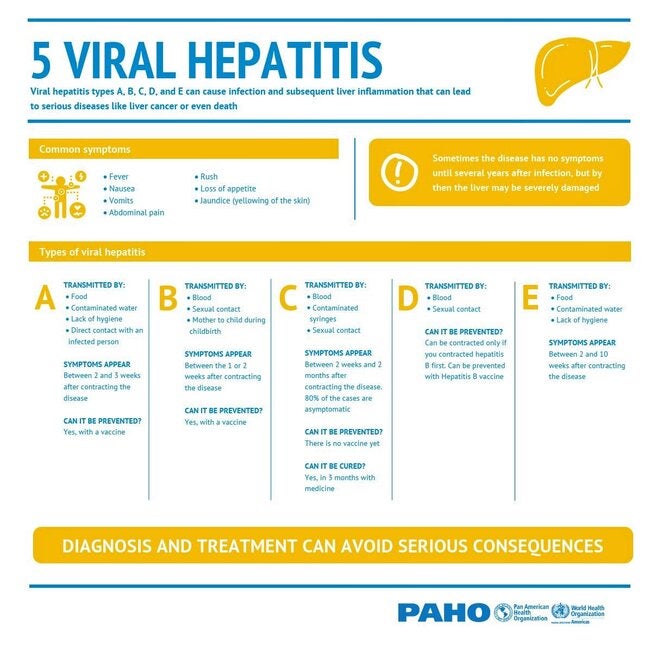The campaign theme for this year’s World Hepatitis Day is “Hepatitis Free Future”. In May 2016, the World Health Assembly endorsed the Global Health Sector Strategy (GHSS) on viral hepatitis, which proposes to eliminate viral hepatitis as a public health threat by 2030 (defined as 90% reduction in incidence and 65% reduction in mortality with regards to hepatitis B and C). Hepatitis prevention and care services are essential even during the Covid-19 pandemic. The annual global mortality from viral hepatitis is comparable to that of HIV, tuberculosis or malaria and is likely to exceed the number of victims of these three combined diseases by 2040, under the current status quo.
Washington, D.C., 28 July 2020 (PAHO/WHO).- Hepatitis is a disease caused by viruses, responsible for high levels of morbidity and mortality worldwide. It is estimated that 57% of cases of liver cirrhosis and 78% of cases of primary liver cancer are caused by the hepatitis B and C viruses.
Recognizing the important public health problem that hepatitis represents, at the 63rd World Health Assembly held in 2010 designated July 28 as the World Day to Combat Hepatitis and makes a worldwide call for a comprehensive response in the fight against hepatitis. Since then, the Pan American Health Organization (PAHO) and the World Health Organization (WHO) have mobilized to join efforts and establish strategies to combat hepatitis at the regional and global levels.
The Latin American and Caribbean Region has made significant advances in terms of vaccination, and all countries have included hepatitis B vaccination in their vaccination schedules for children, and 25 of the 52 countries and territories have included the universal dose for newborns in the first few 24h of life.
Serological tests for the detection and diagnosis of hepatitis B and C are also available. However, access to treatment of hepatitis C with direct acting antivirals is very limited in the Region. Seventeen countries report having these drugs to treat chronic hepatitis C, but the number of people receiving treatment is actually very limited.
Hepatitis data in the Region
PAHO estimates that in 2019 there are 3.9 million people living with chronic hepatitis B; 7.2 million living with chronic hepatitis C; and 125,000 people died of liver cancer and liver cirrhosis over the past year.
WHO pages on hepatitis:
Hepatitis A | Hepatitis B | Hepatitis C | Hepatitis D | Hepatitis E




